Press Releases
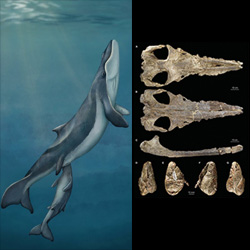
Texas A&M Galveston Professor Part Of Team To Name New Transitional Whale Species
A newly named fossil whale, Maiabalaena nesbittae, provides information regarding the evolution of baleen in filter feeding mysticete whales. The findings were published today in the journal Current Biology... (read more about A newly named fossil whale).
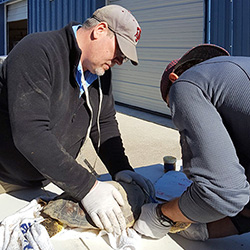
Texas A&M Galveston Assists in Saving Sea Turtles from Death Due to Extreme Cold
The arctic cold front that dropped temperatures so quickly along the Texas Coast caused sea turtles to become cold-stunned, killing many. Faculty and staff at Texas A&M University at Galveston stepped up to help the sea turtle community... (read more about Saving Sea Turtles).
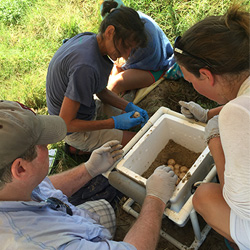
Texas A&M Galveston's sea turtle patrol is back in action as turtles return to nest on Texas beaches
Last week the Upper Texas Coast Sea Turtle Patrol, which is a collaboration of Texas A&M University at Galveston and Turtle Island Restoration Network, found their first Kemp's ridley sea turtle nest. In addition, the patrol was able to examine the turtle after it laid its eggs, which provides important information to sea turtle biologists... (read more about Texas A&M Galveston's sea turtle patrol).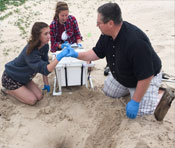
Texas A&M at Galveston Prof Receives Funds to Save Endangered Turtles
Efforts to save the endangered Kemp's ridley sea turtle have received a big boost in the form of a two-year $220,162 funding commitment to a Texas A&M University at Galveston researcher.
Dr. Christopher Marshall, associate professor of marine biology on the Galveston campus, has been awarded the funds as part of the Deepwater Horizon natural resource damage assessment settlement... (read more about TAMUG Prof Receives Funds to Save Endangered Turtles).
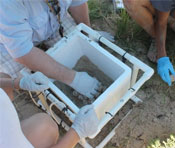
Turtle eggs recovered on Crystal Beach
Last Tuesday morning, sea turtle tracks were found on the beach near barrel 84 in front of Sandpiper Subdivision. This was immediately reported to the Sea Turtle Network hotline, and faculty and students from Texas A&M-Galveston, along with members of Turtle Island Restoration Network (TIRN) came to Bolivar to search for the nest. (read more about Turtle eggs recovered on Crystal Beach).
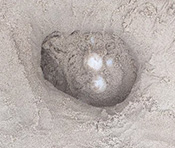
Season's first Kemp's turtle nest spotted
GALVESTON - Two college students on Thursday discovered the first eggs this nesting season laid by an endangered Kemp's ridley sea turtle on the upper Texas Gulf Coast. (read more about Season's first Kemp's turtle nest).
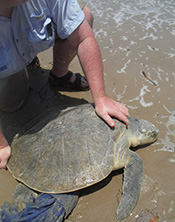
First Kemp's ridley turtle nest found at Surfside
Two college students Thursday discovered the first eggs this nesting season laid by an endangered Kemp's ridley sea turtle on the upper Texas Gulf Coast.
Two students from Texas A&M University at Corpus Christi vacationing at Surfside in Brazoria County found the nest about 11:45 a.m., said Christopher Marshall, who heads turtle research at Texas A&M University at Galveston. (read more about ridley turtle nest).
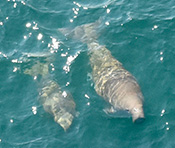
Dugongs May Be Long Gone If Not Protected, Says Texas A&M Galveston Prof
It’s got a funny name and it looks even funnier. Dugongs will never win any beauty contests, and few people probably know what they are. But a Texas A&M University at Galveston researcher is trying to find ways to save the bulky underwater creatures from being just another marine species that has gone extinct. For starters, dugongs are distant cousins of manatees, together these creatures are more closely related to elephants than other marine mammals. (read more about Dugongs).
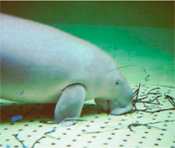
Deal to study dugongs in Qatari coastal waters
ExxonMobil Research Qatar (EMRQ), Qatar University (QU), and Texas A&M University at Galveston (TAMUG) have signed a tri-party agreement to further environmental research and marine mammal initiatives relevant to Qatar (read more about Deal to study dugongs in Qatari coastal waters).
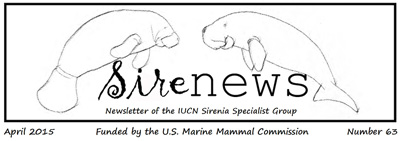
A New Initiative to Assess Dugongs of Qatar: Persistent Population or Population in Decline?
Dugongs of the Arabian Gulf are consistently referred to as the largest population of dugongs outside of Australia, and the most important region for dugongs in the western portion of their range. These statements are based upon Preen’s (1989) gulf-wide survey almost 30 years ago. While certain countries in the region, such as the United Arab Emirates (UAE), have made significant progress in understanding the natural history of Arabian Gulf dugongs, others have lagged behind (read more about New Initiative to Assess Dugongs ).
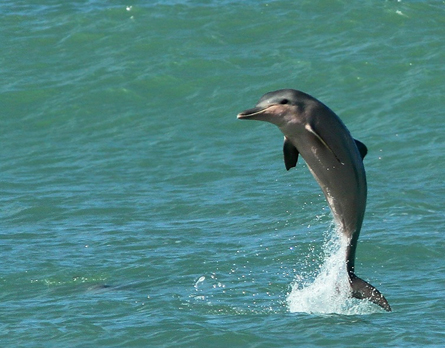
Dolphin Can Sense Electric Field
Fleeing fish beware: The Guiana dolphin has a super Spidey sense. But instead of danger, the dolphin detects faint electrical fields generated by such things as contracting muscles, a beating heart and pumping gills — telltale signs of potential prey. The dolphin is the first true mammal with these super sensory powers, scientists report. (read more about Dolphin sense of electric field)
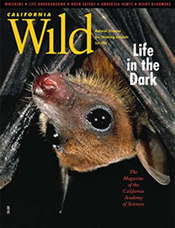
California Wild - "Whiskers in the Dark"
Like regular hairs, vibrissae are really just stout pillars of dead skin cells. It’s the fancy accessories hidden below the surface of the skin that make vibrissae special. All vibrissae are sunk in a follicle sealed by a capsule of blood, known as a blood sinus. Just as the air inside a balloon will shift when the balloon is squeezed, when a vibrissa is touched it bends and pushes blood against the opposite side of the sinus.
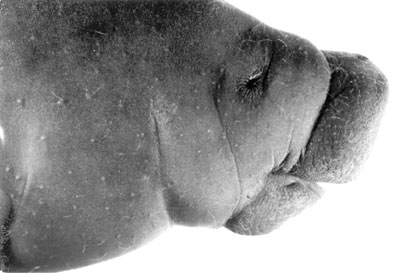
Science Now - The Hairy Senses of Manatees
The sluggish manatee, an endangered mammal that lives in tropical waters, may use its sparse body hairs much like a cat uses whiskers--to sense the surrounding environment. Researchers have found that the hairs are connected to many nerves, forming a sensory network, which could help Florida manatees navigate by detecting water pressure changes. That would make it the first mammal known to... (read more about Hairy Senses of Manatees)